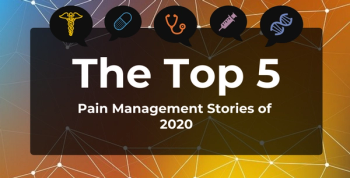
Study Examines Pain Sensitivity, Hormone Level in Menstrual-Related Migraine
Menstrual-related migraines that occur after estradiol drops often carry with it disabling pain and heightened pain sensitivity, but why this is so is unknown.
A small study from The Netherlands
Estradiol is a key fluctuating sex hormone that affects migraines, and MRM that happen after a drop in estradiol early in the menstrual cycle may often carry with it disabling pain and heightened pain sensitivity.
The
They excluded patients using prophylactic migraine medicine as well as women with comorbidities, irregular cycles, or those using hormonal contraceptives. Participants were asked not to use acute pain relievers 48 hours before visits.
Women with MRM (n = 14) and healthy controls matched by age (n = 10) were asked to grade trigeminal and non-trigeminal painful stimuli on a numeric pain rating scale from 0-10 on menstrual cycle day 19–21 (the first study visit) and day 1–2 (the second study visit).
Postmenopausal women (n = 15) were invited for 2 visits with a 7–10 day interval.
Because the activation of the trigeminovascular system is linked to pain sensation during migraine, the authors said they sought another way to uncover pain stemming from MRM by looking at pain perception in trigeminal and non-trigeminal dermatomes (a section of skin supplied by a single spinal nerve).
During the study visits, they applied painful stimuli to the forehead (which is a trigeminal area) and to the neck and upper arm (a non-trigeminal area).
Results showed that those with MRM had low trigeminal pain throughout the cycle, as well as low non-trigeminal pain scores, and that women with MRM had significantly different cycle changes from the control group.
Those in the control group showed increased trigeminal pain during the mid-luteal phase compared with the early follicular phase. Results were similar for post-menopausal women.
However, for non-trigeminal pain stimuli, no significant differences in pain perception were observed, either between visits or groups.
The authors, noting that there is conflicting data about this subject, nevertheless wrote that the “compromised menstrual cyclicity of pain perception in women with menstrually-related migraine parallels our earlier findings on estradiol levels and dermal blood flow.” In that study, they reported that that estradiol levels and forehead dermal blood flow are negatively impacted in response to an application of capsaicin.
While much is unknown about how, exactly, estradiol impacts pain pathways and response, the authors said their findings lend support to the idea that these patients “have a compromised menstrual cyclicity in trigeminal pain perception.”
Reference
Linstra KM, Ibrahimi K, van Casteren DS. Pain perception in women with menstrually-related migraine. Cephalalgia. Published online October 21, 2020. doi: 10.1177/0333102420966977
Newsletter
Stay ahead of policy, cost, and value—subscribe to AJMC for expert insights at the intersection of clinical care and health economics.





































